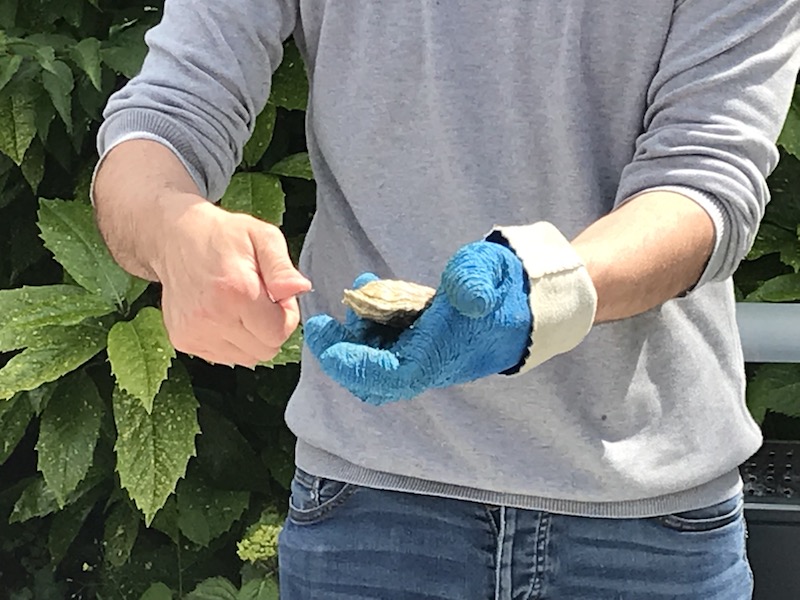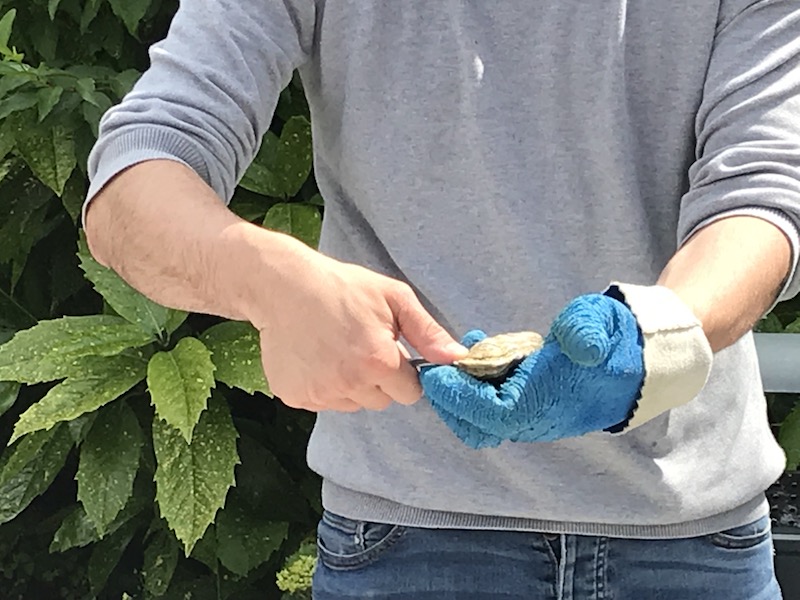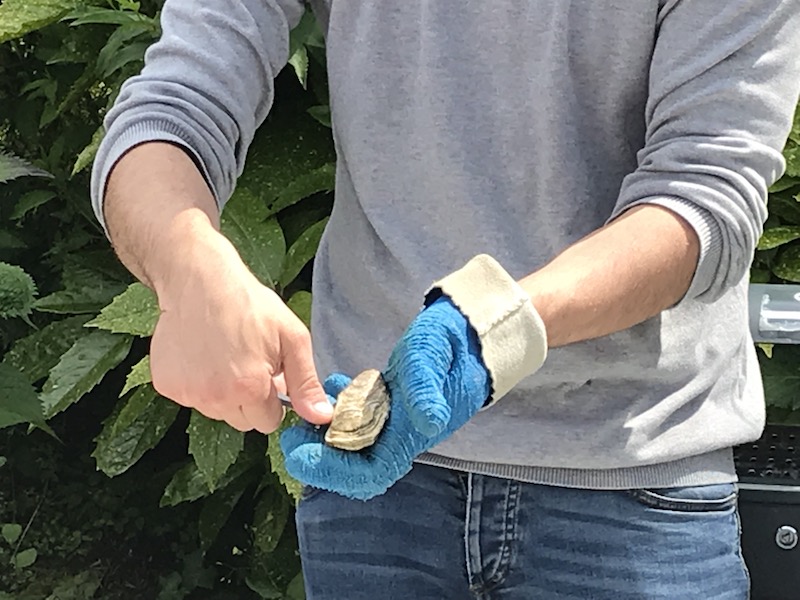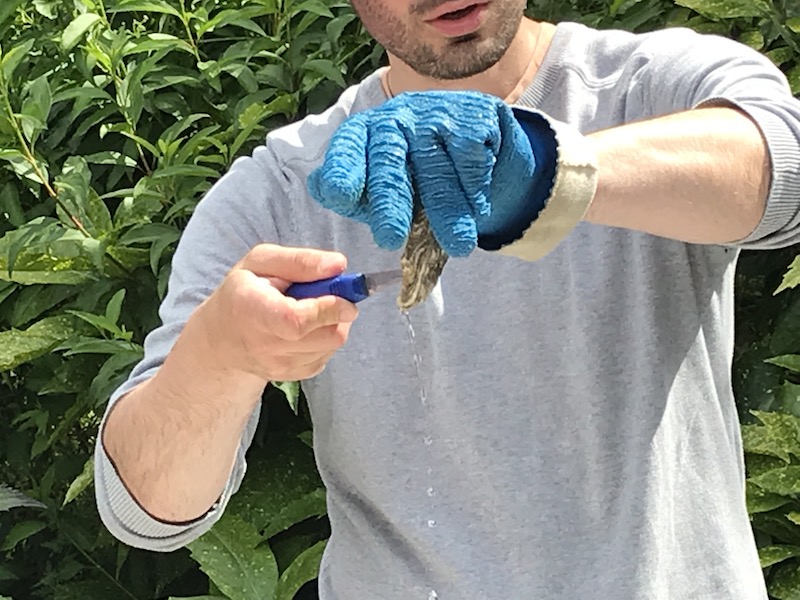Our Blog - Cancale, France
Nothing says Brittany like seafood and nothing says seafood like this fishing village, one of the most picturesque in the region. Renowned for its offshore bancs d'huîtres (oyster beds), Cancale has countless quayside eateries where you can get a dozen pre-opened oysters to slurp down. There is also a market of oysters just at the seaside where you can buy them on a platter to stand and eat (or sit along the port wall) or in a box to take home. Cancale produces 90% of all "flat" oysters in France. A bit of trivia ... the city has inspired a number of painters, including John Singer Sargent, who painted "En route pour la pêche ou Les Ramasseuses d'huîtres de Cancale" in 1878 (in the London National Gallery of Art).
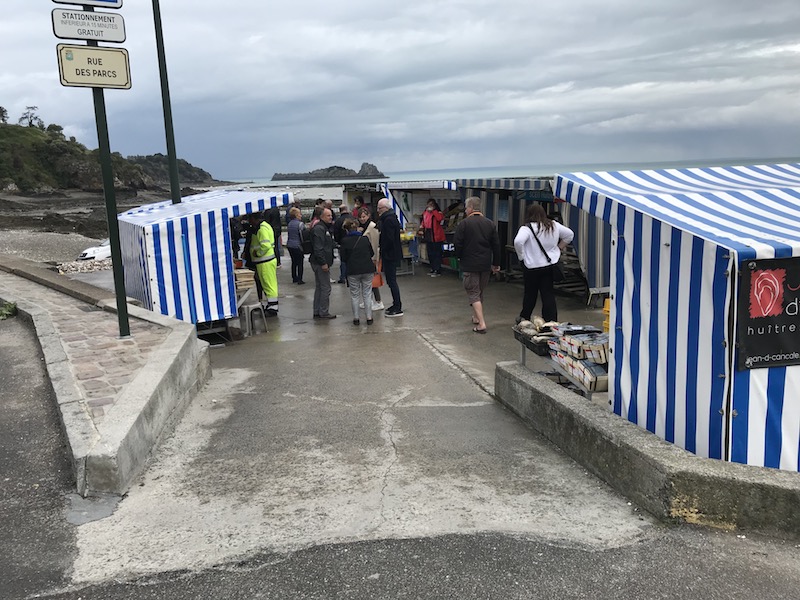
We arrived and went straight to the port, since we really weren't there to see much of anything else. It was low tide and so you can see how a good number of the boats were just sitting on the sand.
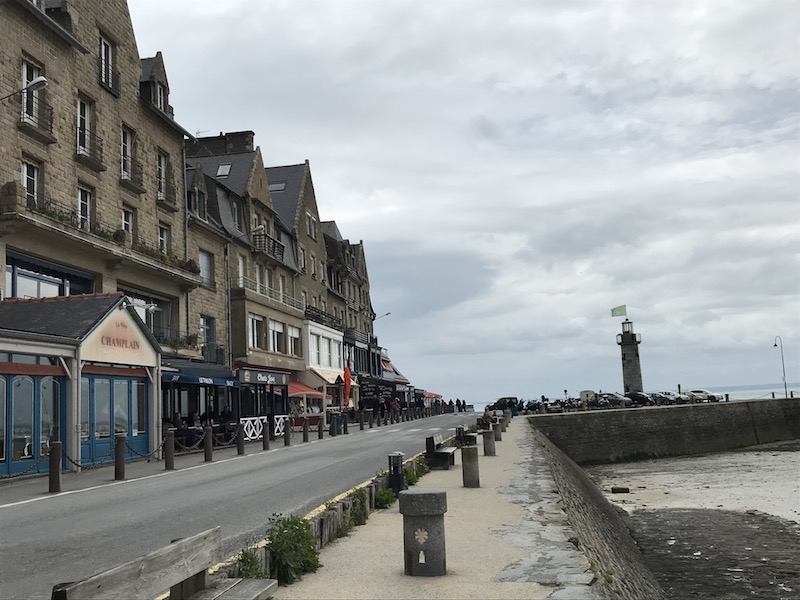
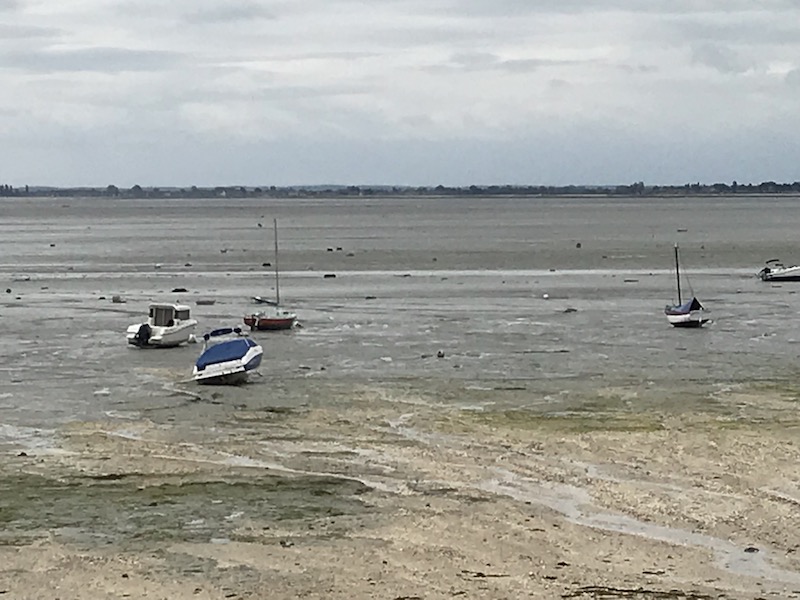

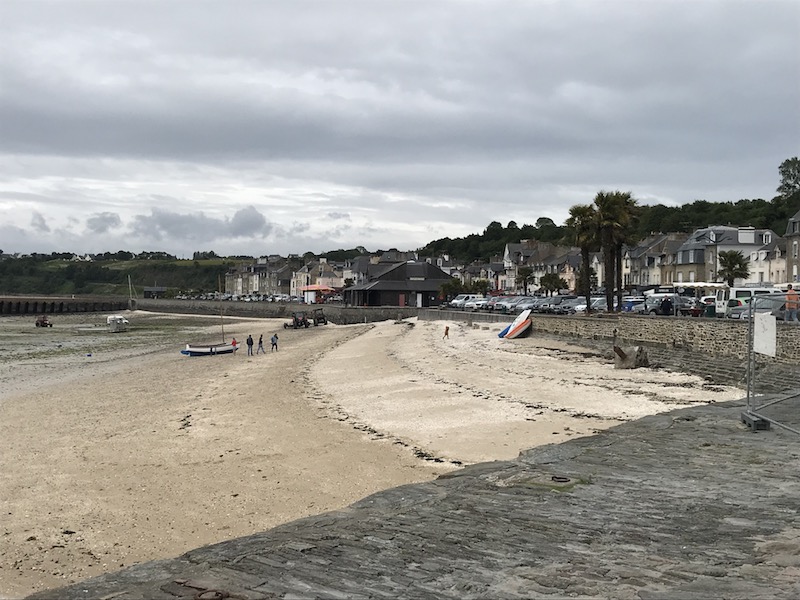


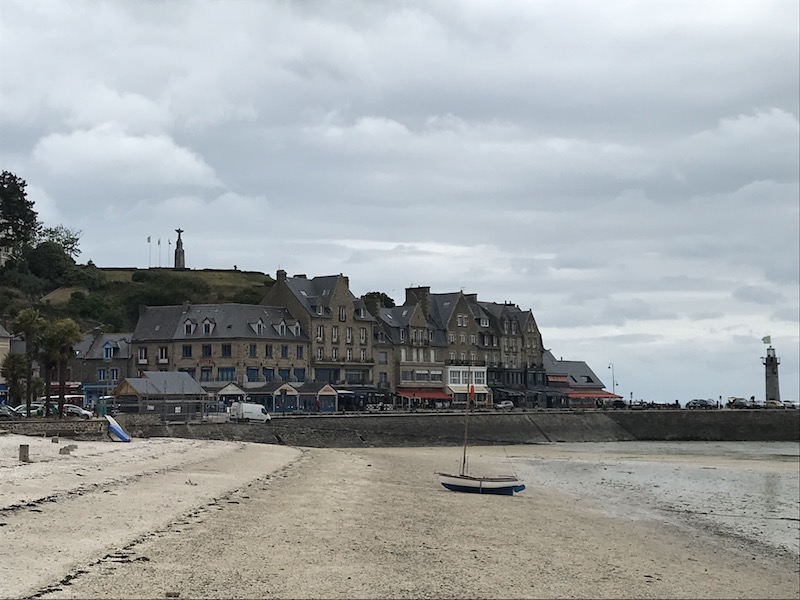
We basically drove to Cancale to eat raw oysters for lunch, which we did. While the night before, we had a plate of "#3" oysters from Cancale, today we went with #2. You can definitely see a difference in the size of these ... the oysters were HUGE ... and these even aren't the largest ones!
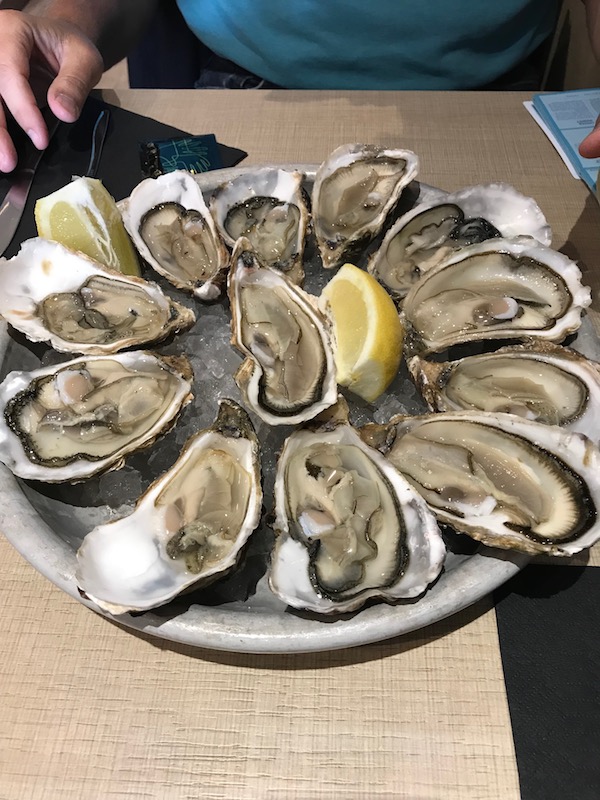
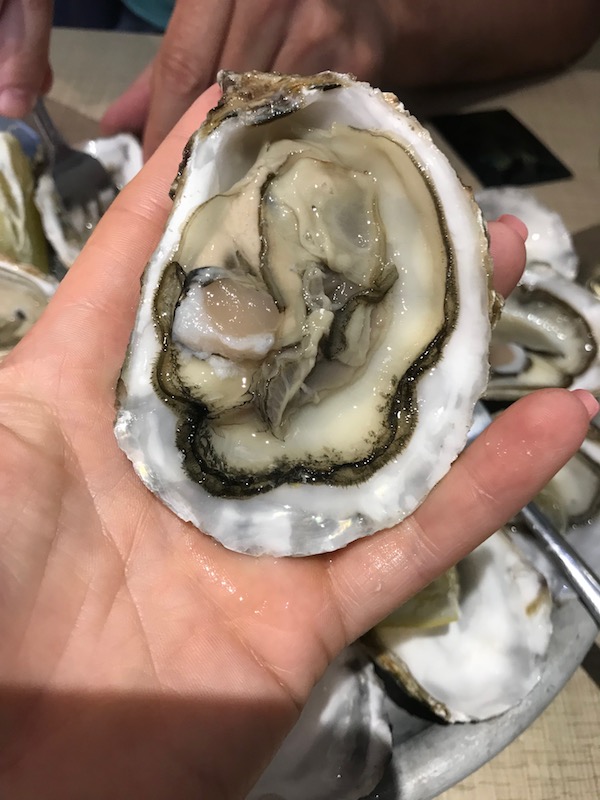
As we were leaving, I grabbed a little video that shows her opening a set of them. Here, she had a special took that held the oyster and then the part that pries the top off. At the market, they would open them by hand, holding it in one hand with a oyster knife in the other.
Not the best picture of the oyster beds, but if you look straight over the beds in the middle of the picture, you can make out Mont Saint-Michel in the background.
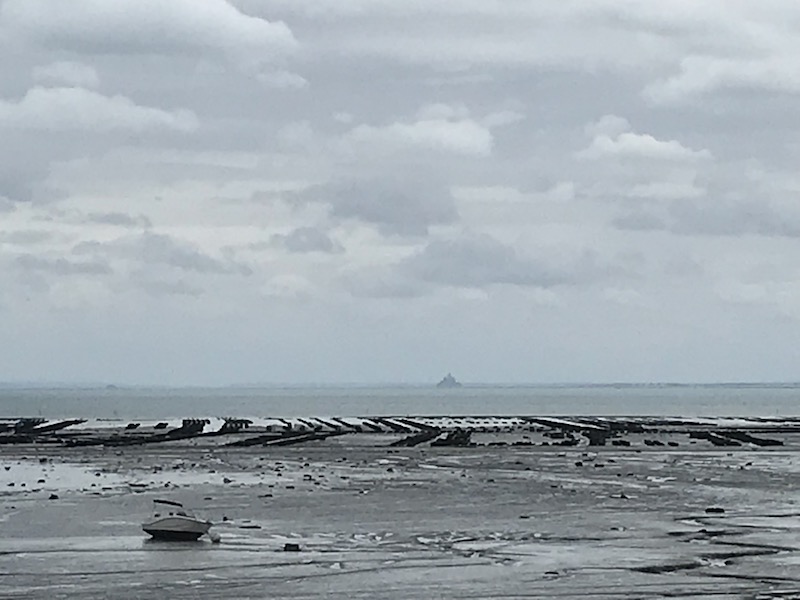
And now the oyster beds. Again, this is low tide, so you can see them really well, and see how massive the oyster farms are. At high tide, these will be totally covered by the water.
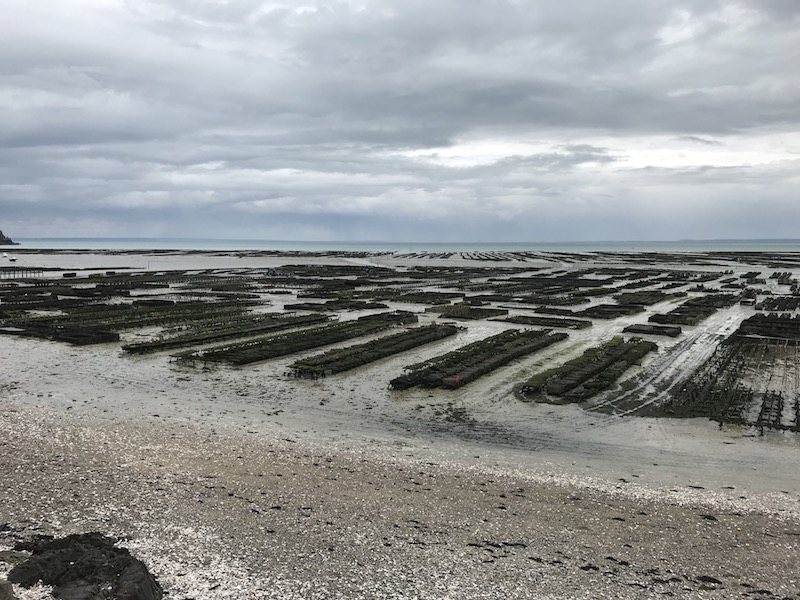
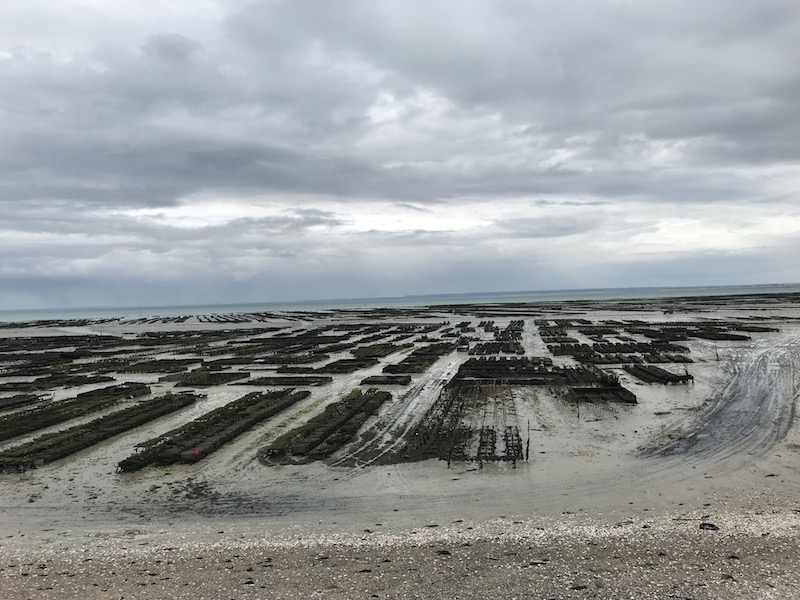
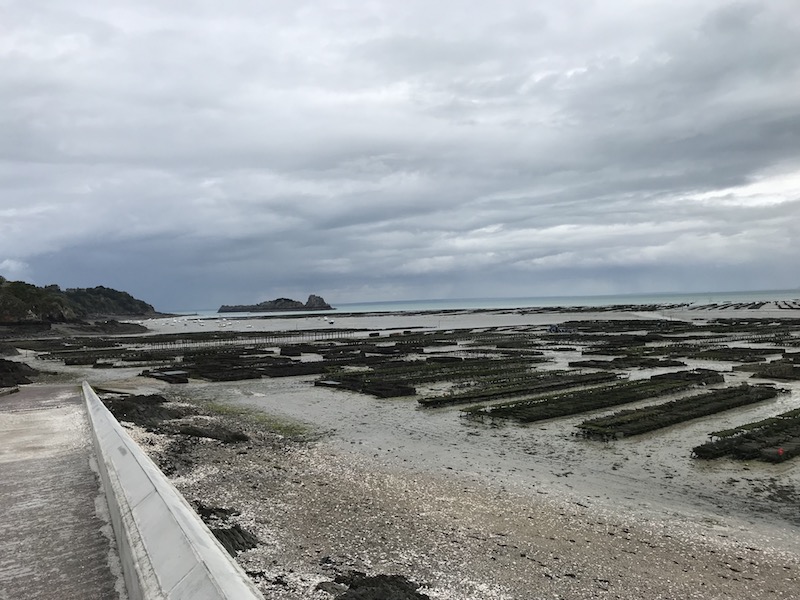
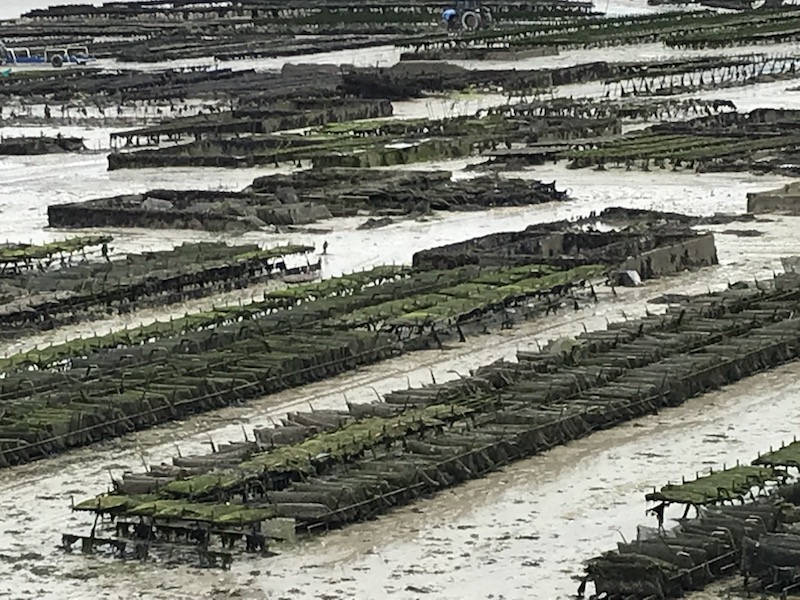
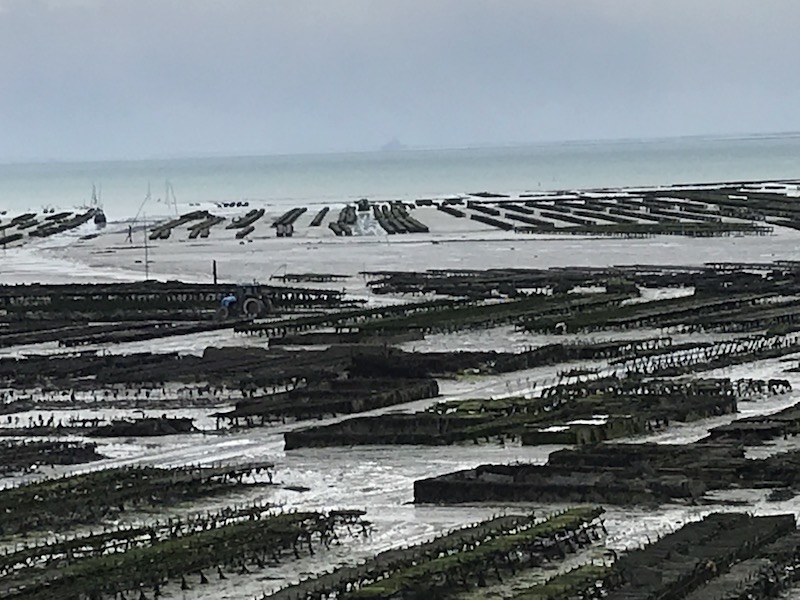
The New York Times described the Kouign-amann as "the fattiest pastry in all of Europe. Our friend, Brigitte, had written this down as something that we had to try while we were up in this area. The name comes from the Breton language words for "butter" and "cake." She described it as butter, sugar, more butter, more sugar, and a bit more butter ... while is actually pretty accurate :-) It was created in the town of Douarnenez (a bit further West from here) in 1860 and the original recipe calls for 40 percent dough, 30 percent butter, and 30 percent sugar.
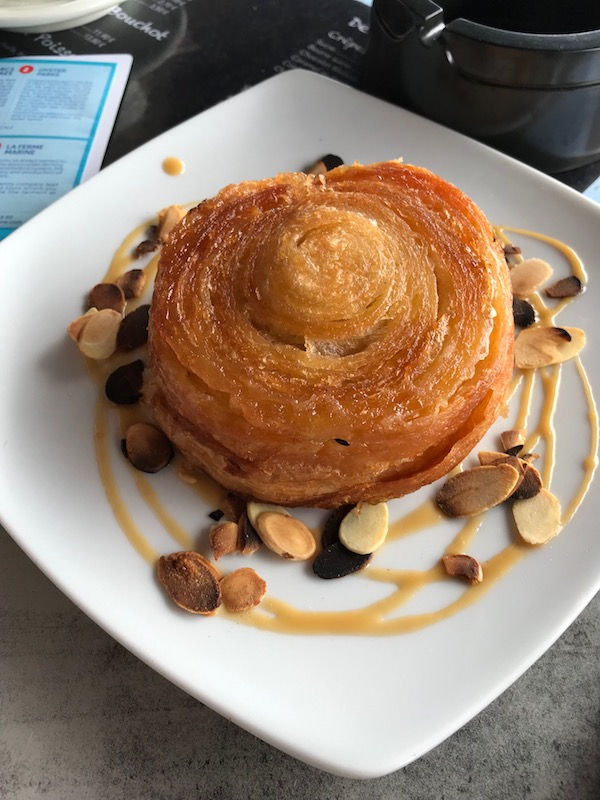
This is the Hotel de Ville, or city hall. I don't know anything about it other than it is one of the nicest looking ones around.
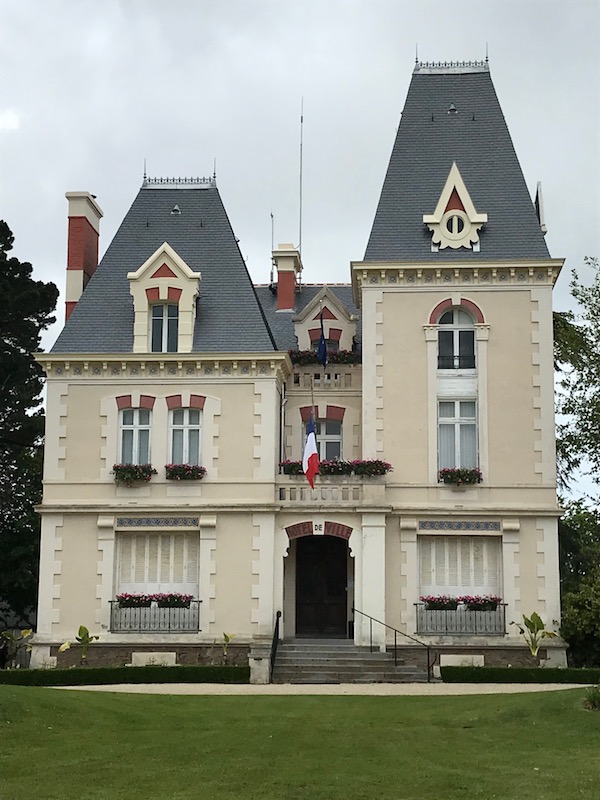
L’église Saint-Méen de Cancale is the only church in town. The original church was built between 1715 and 1727 but rebuilt in 1875 because it was too small. The altar is actually from the 17th century (restored in 1986). Within this church, there are several nice stained glass windows, including one of Jeanne Jugan. I'm guessing you are asking yourself "who is Jeanne Jugan" ... well ... join the club! Never heard of her before we arrived in Cancale. She is a French nun who was born in Cancale in 1792 and dedication of her life to the neediest of the elderly poor. Her service resulted in the establishment of the Little Sisters of the Poor, who care for the elderly throughout the world who have no other resources. She was beatified in 1982 and canonized (became a Saint) in 2009. You can tell that this is a seaside village church with the decorations, but more importantly, a memorial to the people from the town lost at sea.
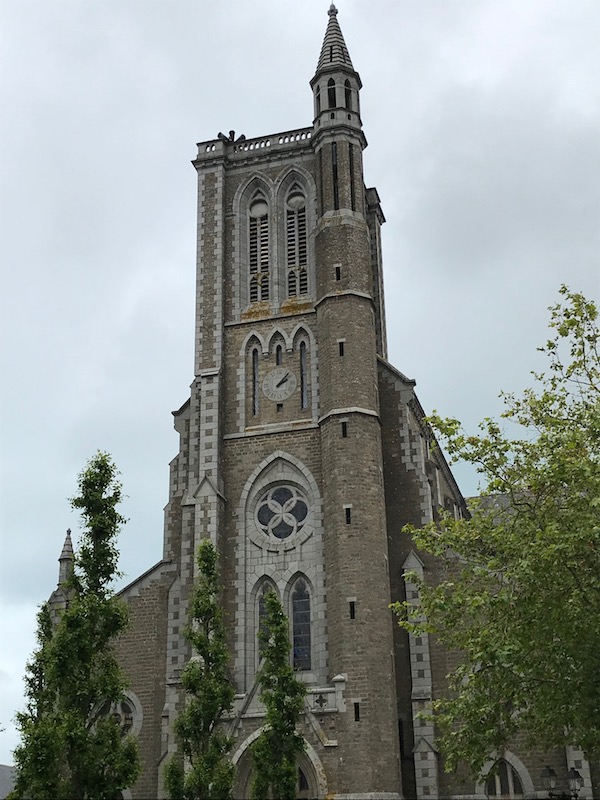
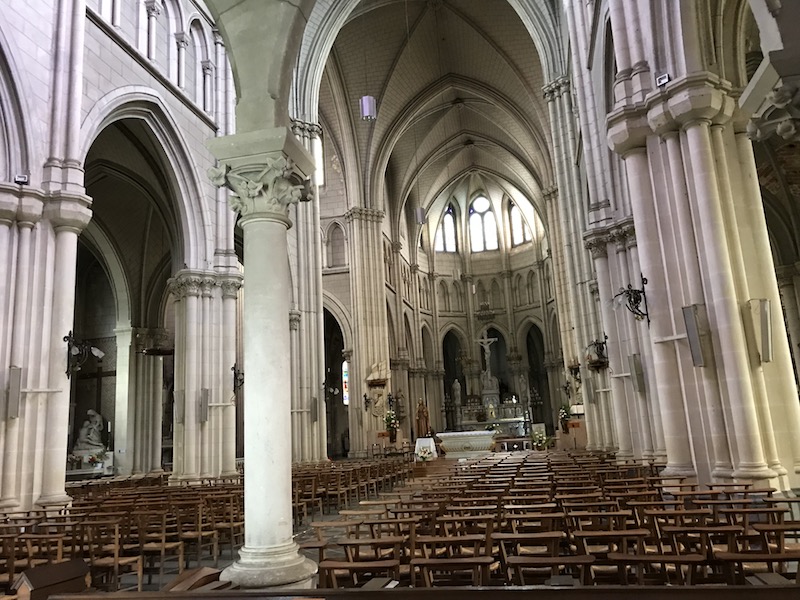

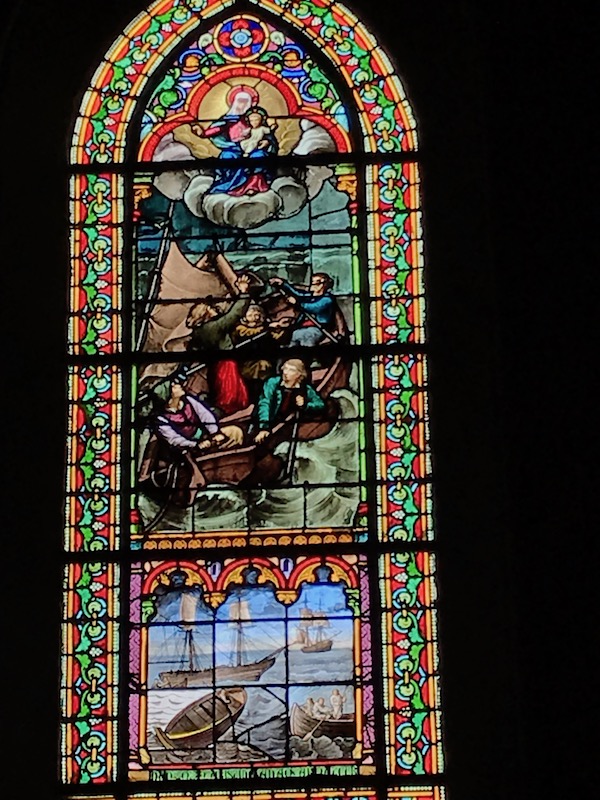

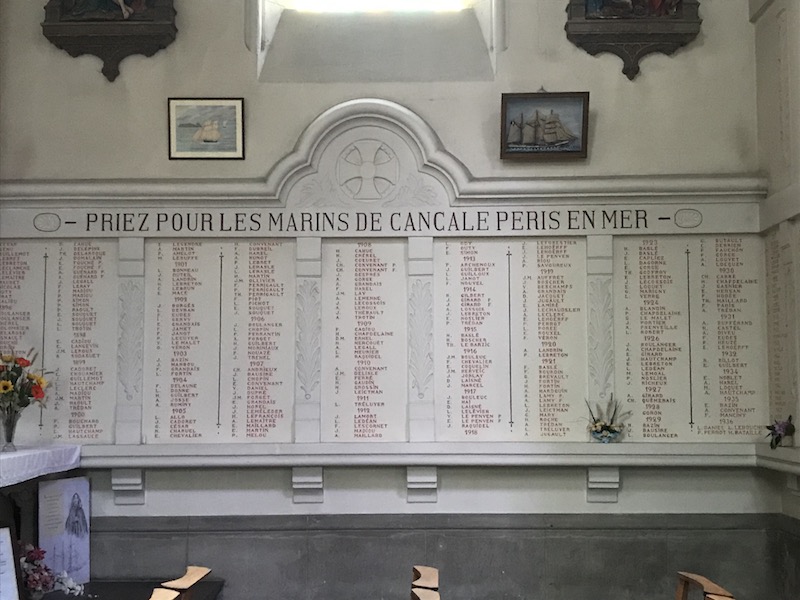

They also have a museum where you can learn how oysters are "farmed" (Ferme de la Marine). There was a little tour that explains a bit about oyster farming and their process. The guide made a comment about a virus that devastated the local oysters in 1920 and were replaced by Portuguese oysters, who were again wiped out between 1967 and 1973. The area was re-populated with Japanese oysters.
This farm doesn't actually start from the beginning with getting the oysters to spawn, but they buy already-started oysters (called spat). These are put into bags and then put out into the bay to mature. Various oyster farmers "rent" plots of land in the bay for their oysters to mature. During low tide, they go out and turn the bags. They are harvested after 3 years, and are placed temporarily here, before cleaned and processed. The water in this basin is sea water and is pumped in and out to simulate the tide.

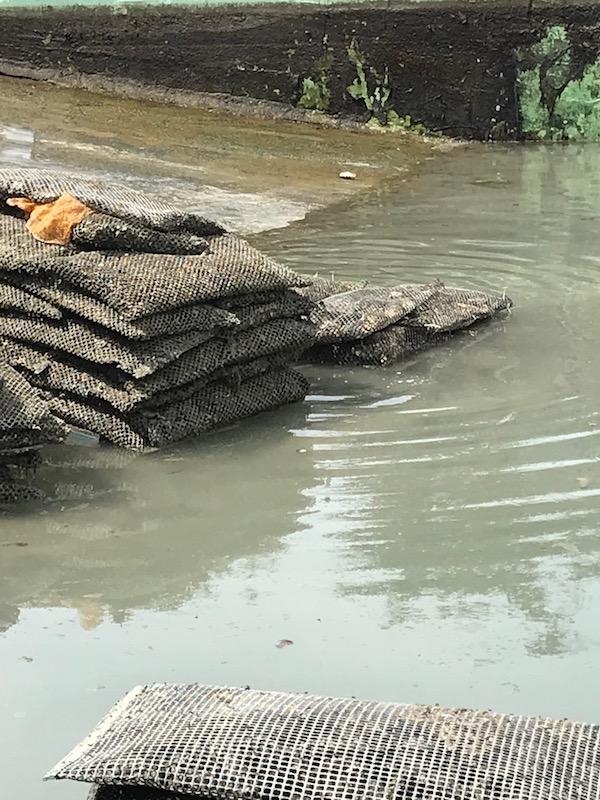
Once washed, they are sorted into size (by grams) and placed in plastic buckets that again, get put into sea water until they are ready to be shipped out. All of the oysters in a single bag started at the same time, but different oysters just grow to be different sizes in 3 years. At this time, they get the oysters ready for transport. Since they are used to being closed for periods of about 3 hours (when the tide is out and they are not under water), they need to get "used to" not being in water and having to remain shut for the time that they will be in-transit. So they move the baskets in and out of the water for longer periods of time to basically get them used to how they will need to be while being transported. Each basket holds 200 oysters.
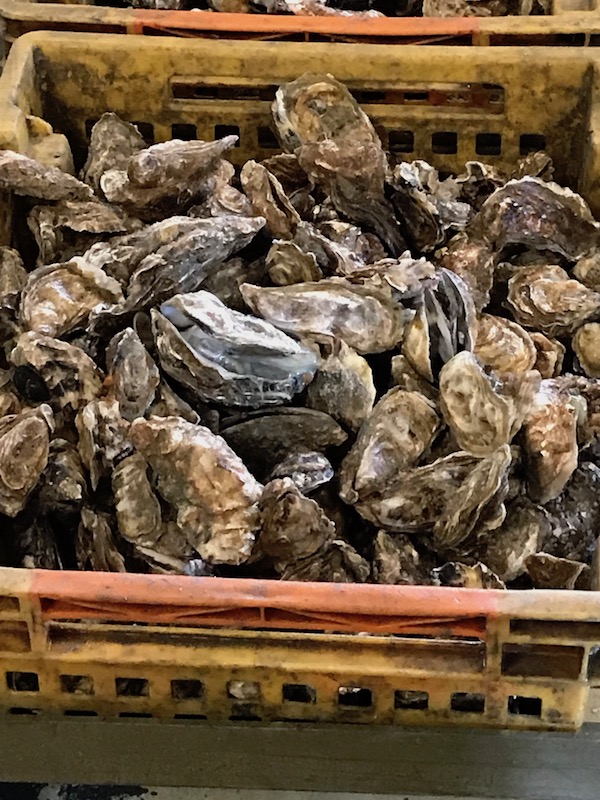
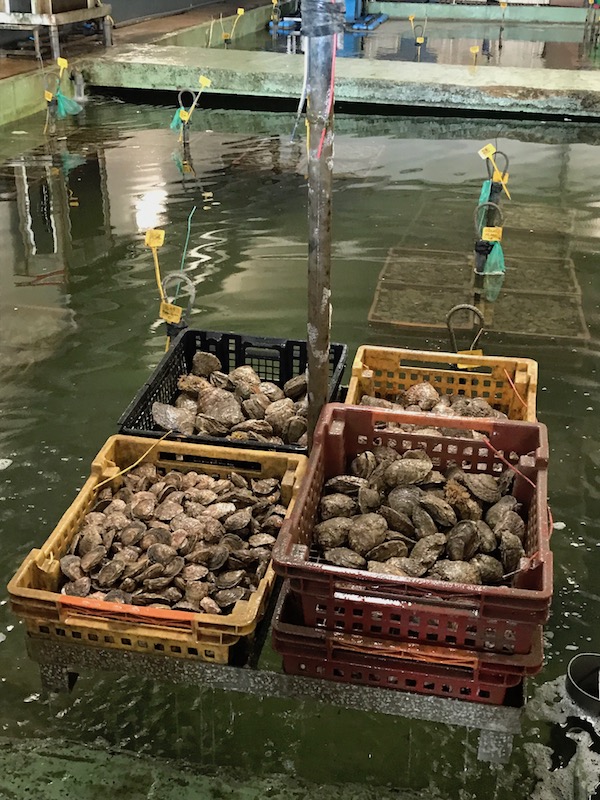
Then we got an up-close lesson on the proper opening technique. He also talked about "Fine de Claire" where the oysters are put in special walled pools that are not impacted by low tide. In this case, the oysters are able to feed all day instead of just during high tide. He also explained how oysters from different areas get a different flavor, similar to how the same grape variety will taste different when grown in different areas and in slightly different soil. The flavor of the oyster is impacted by the water that they grow in and so oysters from the Cancale area (Bay of Saint Michel) will taste different than those from the Bay of Morbihan.
